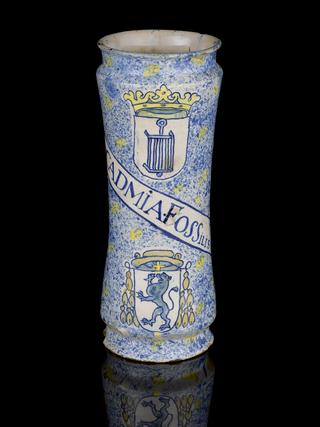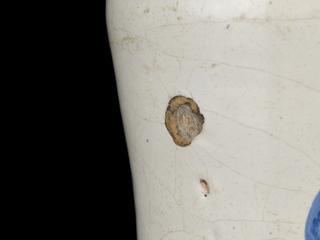




Syrup jug, Italian, fine example from Deruta, mid c17, polychrome maiolica, used for earth smoke water
The inscription painted on the side of this earthenware jar translates from Latin as “Smoke Water”. In this preparation, the dried herb, fumitory, is infused with water and drunk to cleanse the humours, which were thought to cause blockages in the body if unbalanced. Such blockages were believed to trigger a range of health problems, including leprosy, fevers, itches and skin conditions. When taken with the expensive and elaborate preparation theriac, the water was considered to be useful against plague.
The handle of the jar is a snake entwined around a rod, a symbol traditionally associated with Asklepios, the Greek and Roman god of healing and medicine.
Details
- Category:
- Medical Ceramic-ware
- Collection:
- Sir Henry Wellcome's Museum Collection
- Object Number:
- A17900
- Measurements:
-
overall: 394 mm x 323 mm 350 mm, 6.04kg
- type:
- storage jar
- credit:
- Wellcome Trust (Purchased from Stevens)




